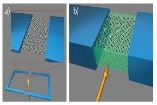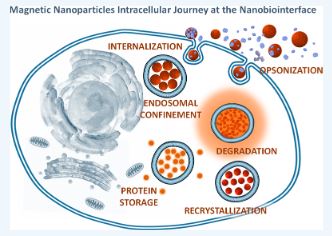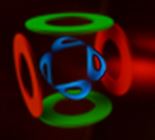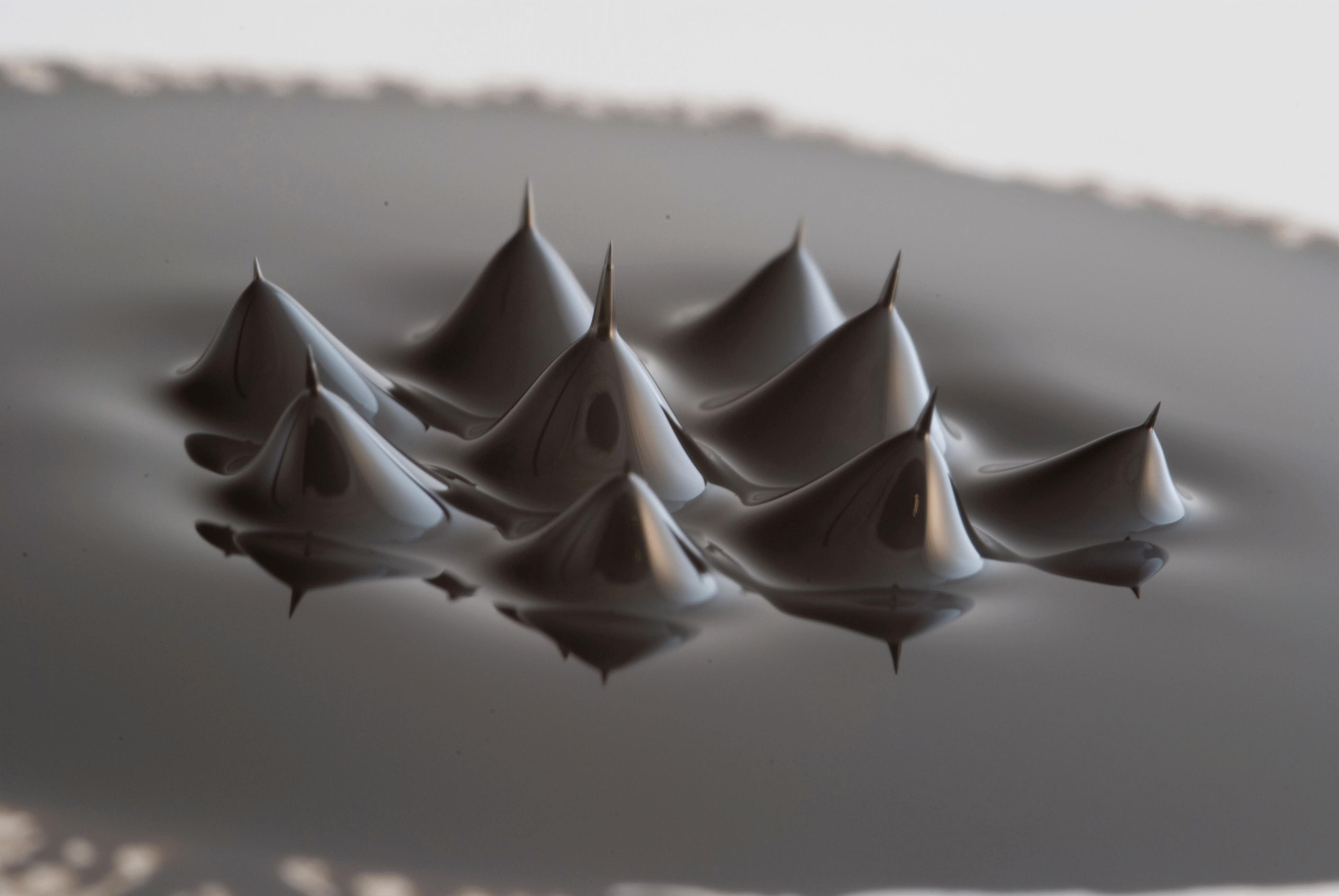
Embracing defects and disorder in magnetic nanoparticles: the emergence of defect-engineering as a new approach to optimize particle properties
February 19, 2021.JPG)
The authors Aidin Lak, Sabrina Disch & Philipp Bender emphasize the beneficial impact of defects and disorder on intracellular magnetic hyperthermia performance of magnetic nanoparticles for drug delivery and cancer therapy. This report illustrates that defect-engineering in iron oxide nanoparticles emerges to become an alternative approach to tailor their magnetic properties for biomedicine, as it is already common practice in established systems such as semiconductors and emerging fields including perovskite solar cells. Additionally, the authors offer their perspectives and thoughts on how to deliberately induce defects in iron oxide nanoparticles and their potential implications for magnetic tracers to monitor cell therapy and immunotherapy by magnetic particle imaging.
This forward-looking progress report can be found on Lak, A., Disch, S., Bender, P., Embracing Defects and Disorder in Magnetic Nanoparticles. Adv. Sci. 2021, 2002682. https://doi.org/10.1002/advs.202002682
Info About the Next IWMPI Meeting
December 27, 2020The International Workshop on Magnetic Particle Imaging, IWMPI, will be skipped in 2021 and held next in March 2022. The conference is currently planned as a face-to-face event. However, if the pandemic situation would not allow that, then it would again be a virtual meeting, as the IWMPI 2020.
The online meeting IWMPI 2020 had a total of almost 1000 participants who watched the livestream. The contributions in the Supplement to the International Journal of Magnetic Particle Imaging IJMPI (Vol 6 No 2 Suppl 1 (2020): Int J Mag Part Imag) are widely read and have good download numbers. Most talks were recorded and are included in the new MPI Media Library. While you have to register for the library, it is free of charge.
Magnetic hyperthermia therapy for glioblastoma
December 02, 2020The Department of Neurosurgery at the Icahn School of Medicine at Mount Sinai has received at the beginning of 2020 more than $10 million in federal funding for several projects focusing on brain tumor research. Dr. Hadjipanayis is the lead investigator in the $3.4 million National Institutes of Health (NIH)-funded study to examine the effects of MHT when used in conjunction with chemoradiation to treat glioblastoma, a devastating brain cancer that almost always relapses because therapy-resistant cancer cells infiltrate the body at the tumor's margin. The study is expected to last five years and will be conducted in close partnership with Robert Ivkov, PhD, MSc, and his team at Johns Hopkins University, who developed the novel magnetic nanoparticles the studies will use. The grant involves a pilot study at Johns Hopkins treating dogs that have spontaneously developed glioblastoma tumors.
"These are powerful magnetic nanoparticles that we deliver directly into glioblastoma tumors by convection-enhanced delivery," said Dr. Hadjipanayis. "We then apply a safe, alternating external magnetic field that oscillates the nanoparticles, which generates heat that destroys the tumor. Multiple treatments can be performed since the nanoparticles persist in glioblastoma tumors. When used in conjunction with radiation and chemotherapy, we expect this treatment will lead to improved outcomes."
Robert Ivkov and co-workers published recently a cool study in this area, about the immunotherapy of cancer with magnetic nanoparticles. Check it out here.
Webinar by the Society for Thermal Medicine
November 22, 2020 On November 15, 2020, the Society for Thermal Medicine organized a webinar with 3 speakers. The theme was
On November 15, 2020, the Society for Thermal Medicine organized a webinar with 3 speakers. The theme was
Arousing Tumor and Systemic Immunity with Magnetic Nanomedicine.
If you want to check it out, go to the recorded session video HERE. Jeff Bulte gave a very nice overview and the history of in vivo Imaging of Dendritic Cells Using Magnetovaccination. Preethi Korangath from the Robert Ivkov lab followed and discussed how the systemic exposure of SPIOs stimulates immune resonses to inhibit tumor growth in mouse models of breast cancer. Excellent work.
WMIC MPI Presentations
October 20, 2020
See the full mpi program and the available recordings here.
A New, Minuscule SQUID to Detect Faint Magnetic Fields
October 15, 2020
Ever-Evolving Identity of Magnetic Nanoparticles within Human Cells: The Interplay of Endosomal Confinement, Degradation, Storage, and Neocrystallization
September 19, 2020
They describe their contribution as "Nanoparticles’ identities evolve in distinct biological environments and over different periods of time. In this Account, we focus on the remodeling of magnetic nanoparticles’ identities following their journey inside cells. For instance, nanoparticles’ functions, such as heat generation or MRI, can be highly impacted byendosomal confinement. Structural degradation of nanoparticles was also evidenced and quantified in cells and correlates with the loss of magnetic nanoparticle properties. Remarkably, in human stem cells, the nonmagnetic products of nanoparticles’ degradation could be subsequently reassembled into neosynthesized, endogenous magnetic nanoparticles. This stunning occurrence might account for the natural presence of magnetic particles in human organs, especially the brain. However, mechanistic details and the implication of such phenomena in homeostasis and disease have yet to be completely unraveled. This Account aims to assess the short- and long-term transformations of magnetic iron oxide nanoparticles in living cells, particularly focusing on human stem cells. Precisely, we herein overview the multiple and ever-evolving chemical, physical, and biological magnetic nanoparticles’ identities and emphasize the remarkable intracellular fate of them."
Check it out in the journal "Accounts of Chemical Research" at https://doi.org/10.1021/acs.accounts.0c00355'
Digital IWMPI 2020 - Free Live Stream
August 28, 2020
For this IWMPI 2020, 80 accepted contributions from 12 countries will show the rapid progress of the field. Following topics of MPI will be presented at the conference: Medical, pre-clinical, and non-medical applications - Coil and field generator design - Data acquisition and signal pre-processing - Signal generation, amplification and filter design - Magnetic field simulation and system modeling - Magnetic particle spectroscopy (MPS) - Molecular imaging - Nanoparticle development - Particle physics and simulations - Reconstruction methods - Sequences, acquisition protocols and spatial coding - Scanner geometries and system design.
Lawrence L. Wald, Ph.D., Martinos Center for Biomedical Imaging, Harvard, USA will give the Keynote on „The Do's and Don'ts of MPI Scanner Instrumentation“.
For more information, check out our Archives.
September 2017

Search this site with the power of
